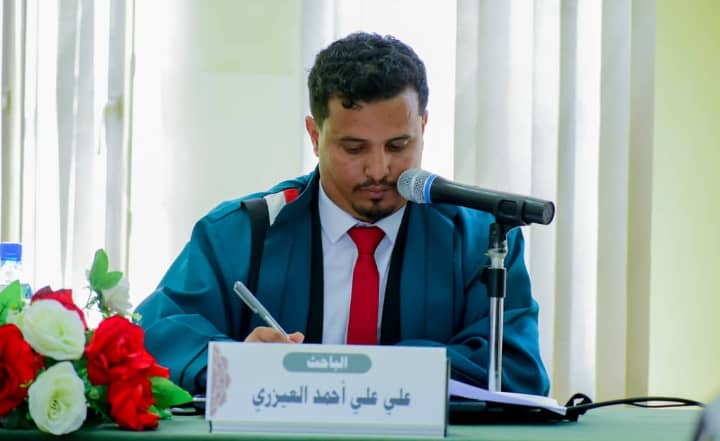Translation in the Age of Globalization: A Bridge Between Cultures or a Tool for Linguistic Domination

Yemenat
Ali Ali Al-Aizari
In today’s interconnected world, translation plays a crucial role in facilitating communication among nations and individuals. It serves as a gateway for exchanging knowledge and cultures, enabling ideas and perspectives to transcend borders. As globalization continues to shape societies, translation has evolved beyond its traditional function of language conversion, it has become a powerful force influencing cultural identities and shaping global discourse.
This raises an essential question: Is translation a means of fostering cross-cultural understanding, enriching linguistic diversity, and bridging gaps between civilizations? Or has it become a tool that reinforces the dominance of certain languages, threatening the cultural and linguistic heritage of smaller communities?
First: Translation as a Bridge Between Cultures
Throughout history, translation has been a fundamental vehicle for the transmission of scientific discoveries, artistic expressions, and philosophical thought across civilizations. It has played an indispensable role in advancing human knowledge and fostering cultural dialogue. A compelling example is the Islamic Golden Age, when Greek philosophical and scientific works were translated into Arabic, then later into European languages, significantly shaping Western thought.
Beyond its academic contributions, translation also serves as a powerful tool for cultural exchange. It allows societies to understand one another’s traditions, values, and beliefs, reducing misinterpretations and encouraging harmonious coexistence. Furthermore, translation grants individuals access to diverse literary, artistic, and intellectual works, enriching their perspectives and stimulating creativity.
Second: Translation as a Tool for Linguistic Domination:
Despite its undeniable benefits, translation can sometimes contribute to linguistic and cultural dominance. In today’s world, languages like English wield disproportionate influence, often dictating the global flow of information. While numerous texts are translated from English into other languages, the reverse is less common, limiting the representation of less widely spoken languages on the global stage. This imbalance reinforces cultural hierarchies and weakens local linguistic identities.
This phenomenon poses a significant threat to linguistic diversity, as smaller languages gradually diminish in influence and relevance. Additionally, translation is sometimes used as a conduit for disseminating dominant ideologies and values, shaping societal narratives while marginalizing indigenous perspectives and traditions.
Third: Real-World Examples of Translation’s Impact on Culture and Communities
Philosophy and Science in the Islamic Golden Age: during the Islamic Golden Age, translation was instrumental in preserving and expanding philosophical and scientific thought. Works by Aristotle and Plato were translated into Arabic, later influencing European intellectual movements and fueling the Renaissance.
Russian Literature’s Influence on Arabic Narratives: in the 20th century, translated works by Russian authors like Dostoevsky and Tolstoy deeply impacted Arab literary traditions, introducing new narrative styles and inspiring a wave of realist literature in the Arab world.
Japanese Literature’s/Drama’s Expansion into the West: post–World War II translations of Japanese authors such as Haruki Murakami and Yukio Mishima introduced global audiences to Japanese culture, increasing interest in philosophical themes and traditional arts such as manga and anime.
Scientific and Technological Translation Driving Innovation: Translation plays a crucial role in globalizing advancements in medicine and engineering. By translating research from English into various languages, breakthroughs in healthcare and technology have reached diverse populations, improving quality of life worldwide.
Forth: Possible Solutions in Promoting Linguistic and Cultural Diversity:
To counteract the dominance of certain languages and ensure equitable representation in translation, several initiatives can be pursued:
Encouraging Reciprocal Translation: Instead of focusing solely on translating One-language works, efforts should be made to translate literature and scholarly research from less widely spoken languages, allowing their ideas to be shared globally.
Supporting Local Languages: Governments and institutions should invest in translation programs that preserve linguistic diversity, ensuring that scientific and artistic works are accessible in multiple languages, regardless of global prominence.
Leveraging Technology for Inclusive Translation: Advancements in artificial intelligence should be harnessed to support multilingual translation rather than reinforcing linguistic hierarchies. AI-driven tools can facilitate fairer representation of diverse languages across digital platforms.
To sum up, translation remains a powerful force for global communication, fostering understanding and exchanging knowledge across cultures. However, when misused or imbalanced, it can contribute to linguistic domination, threatening diversity and diminishing the voices of marginalized languages. To uphold linguistic equity, fair translation policies must be enacted, ensuring that language serves as a bridge rather than a barrier in our globalized world.

